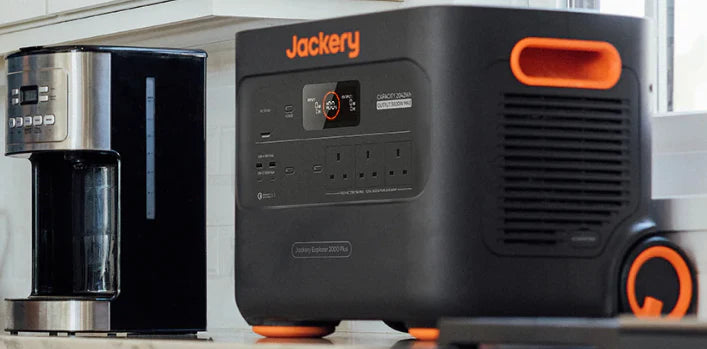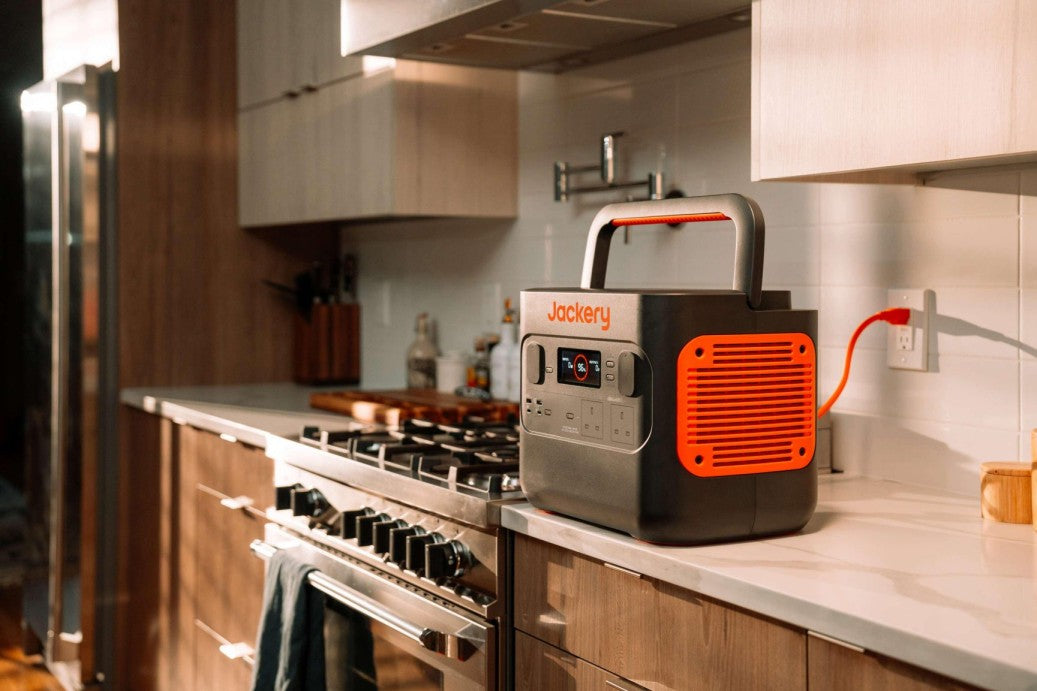Living on a narrowboat is a unique and exciting way of life, but it's essential to know the costs involved to make informed decisions. This guide includes everything, from the initial expenditures on mooring and utilities, such as fuel, gas, water, and electricity.
We also include key costs, such as insurance, maintenance, council tax, and living expenses, including groceries and internet. Whether you're planning to live on a narrowboat in the country or in London, this comprehensive book describes the legal requirements. It provides practical financial advice to help you live comfortably on the water.
We also strongly suggest the Jackery Portable Power Station. This portable power source can charge your gadgets and appliances on a narrowboat, helping you save money on your energy bill. Jackery Solar Panels may also charge the Portable Power Stations on sunny days.
|
Key Takeaways: |
|
- Depending on the narrowboat's age, size, and condition, the initial purchase and outfitting costs may vary significantly. - Mooring costs vary greatly depending on the locality, with moorings in cities typically costing more than those in rural areas. - Depending on your lifestyle preferences, living on a narrowboat in London may occasionally be less expensive than renting an apartment. - Carefully selecting mooring places, utilising energy-efficient appliances, setting aside money for maintenance, and routinely monitoring spending are all examples of wise cost management. - We highly recommend Jackery Explorer 1000 v2 and 2000 v2 portable power stations to power your appliances and devices on the narrowboat. |
Is Living on a Narrowboat Cheaper Than a House or Flat?
As property costs in the UK continue to rise, particularly in urban areas like London, more people are exploring narrowboats and other alternative living options. Many people find the idea of a more economical lifestyle on the water appealing, but is narrowboat living actually less expensive than living in a home or flat? Prior to making the changeover, it is crucial to comprehend the entire financial scenario.
Cost Comparison: Narrowboat vs Traditional Housing
Most of the time, living on a narrowboat saves money on council tax and regular rent or mortgage payments, which are big costs for both renters and homeowners. This doesn't mean that living on a narrowboat is always cheaper, either. Even though you don't have to pay council tax, you still need to account for other typical expenses that come with boating, such as mooring fees, boat insurance, maintenance, and utilities.
Location can have a significant impact on mooring fees; for example, London's metropolitan marinas or upscale neighbourhoods frequently demand premium rates that are comparable to or higher than the average rent for apartments. However, narrowboat living is more economical in rural or less central locations because moorings are typically less expensive in these areas. Additionally, if you use generators or private sources, utility expenditures such as water, electricity, and heating fuel may be higher or less predictable aboard a yacht.
Maintenance and Upkeep Costs
A narrowboat requires regular maintenance, including cleaning the hull, repairing the engine, and painting it periodically to protect it from rust. This differs from a house or flat. These costs can accumulate easily, especially if you use the boat frequently. You need to think carefully about the ongoing costs of maintenance, such as winterising the yacht and addressing mechanical problems.
Lifestyle and Hidden Costs
Lifestyle decisions have a significant impact on the overall affordability of narrowboat living. For instance, some boaters decide to live off the grid by utilising water tanks and solar panels, which can lower utility costs but come with an initial cost. Other people might cover the cost of marina facilities, such as laundry, showers, and Wi-Fi, which can raise monthly costs. Additionally, fuel for cooking and heating can be more expensive than mains gas in a home or apartment.
Is Narrowboat Living Cheaper?
Particularly outside of large cities, many people discover that living on a narrowboat can be less expensive than renting or buying a house. However, the financial benefit wanes in urban locations, where mooring fees are substantial. Crucially, some people value the distinctive lifestyle and independence that narrowboat living provides over simple cost advantages. Thus, even if it can reduce property prices, it is vital to weigh all associated costs and personal preferences before making the switch.

Initial Cost: Buying a Narrowboat and Getting Started
The most significant initial step in starting life aboard a narrowboat is purchasing the boat itself. It is crucial to understand the initial costs to budget for this lifestyle change. When purchasing a narrowboat and preparing it for comfortable living, several additional upfront costs are involved.
Buying a Narrowboat: What to Expect
A narrowboat's age, size, condition, and degree of renovation can all significantly impact its cost. A used narrowboat can cost anywhere from £15,000 for a basic, older model to over £100,000 for a newer, fully restored boat with living accommodation. A new narrowboat usually costs roughly £80,000, although prices can go up a lot because of special features and requirements.
Before making a purchase, it is essential to inspect the boat's condition thoroughly. Prospective purchasers should consider hiring a professional surveyor to inspect issues such as boiler performance, engine condition, and hull integrity, as these may lead to increased future maintenance expenses if left unaddressed.
Renting vs. Purchasing a Narrowboat: Cost Comparison
|
Category |
Renting a Narrowboat |
Purchasing a Narrowboat |
|
Upfront Costs |
Security Deposit: £500–£1,000- Initial Rent Payment: Varies by provider |
Purchase Price: £10,000–£150,000+- Survey & Legal Fees: £500–£1,000 |
|
Monthly Costs |
Rent: £800–£1,500- Utilities: Often included- Insurance: Included |
Mooring Fees: £200–£1,000- Utilities: £50–£150- Insurance: £20–£50 |
|
Maintenance |
Responsibility: Typically covered by owner- Unexpected Repairs: Not your responsibility |
Regular Maintenance: £500–£1,500 annually- Unexpected Repairs: £500–£2,000+ |
|
Licensing & Taxes |
Canal & River Trust License: Usually included- Council Tax: Not applicable |
License: £500–£1,000 annually- Council Tax: £0–£1,500 annually (if applicable) |
|
Flexibility |
High: Short-term commitments, easy relocation |
Medium: Selling can take time; relocation depends on mooring availability |
|
Long-Term Investment |
None: No asset accumulation |
Yes: Potential for asset appreciation or depreciation |
Additional Upfront Costs
New narrowboat owners must consider several significant upfront expenses in addition to the initial purchase price. Boat insurance is one of the first costs; it is necessary to guard against damage, theft, or liability and usually varies according to the boat's worth and intended use. Boat safety certificates, which may include inspections and related costs, are necessary in addition to insurance to confirm that the vessel satisfies the relevant safety requirements.
To facilitate legal navigation on the canals, navigation authorities such as the Canal & River Trust require annual registration and licensing fees, which are another ongoing expense to budget for. Obtaining a mooring spot is another significant expense. Mooring prices often require a deposit or booking fee upfront, and these fees can vary significantly depending on the location and facilities.
Many narrowboats need to be furnished and equipped after they are bought in order to be appropriate for living. This means that the cost of bedding, cooking equipment, heating systems, and safety gear must also be taken into account. Last but not least, some boats may require quick repairs or upgrades after purchase to ensure they are safe and comfortable, which would increase the initial cost.
Getting Started: Preparing for Life on the Water
After buying and licensing the boat, new owners often make smart investments, such as solar panels or portable power stations, to become more energy-independent. For instance, boaters can run small appliances, charge electronics, and power lights without depending entirely on marina hookups, thanks to portable power stations like the Jackery Explorer 1000 v2 and 2000 v2, which provide dependable off-grid electricity.
The Importance of Budgeting
Careful planning and budgeting are essential for a successful narrowboat purchase and transition to living afloat, as initial costs can quickly escalate. In order to prevent financial pressure during this exciting lifestyle transition, prospective purchasers should account for both anticipated and unforeseen expenses.
Average Monthly Expenditure
|
Monthly Expense |
Average Cost |
|
Fuel |
£50.00 |
|
Energy (Electricity/Gas) |
£40.00 |
|
Canal & River Trust Licence |
£91.25 |
|
Mooring |
£250.00 |
|
Water |
£0.00 |
|
TV License |
£13.25 |
|
Broadband |
£25.00 |
|
Maintenance |
£60.00 |
|
Insurance |
£25.00 |
|
Other (e.g. firewood, lifestyle) |
£80.00 |
|
TOTAL |
£634.50 |
Ongoing Mooring Fees and Cruising Costs Explained
Living on a narrowboat is different from living in a house, and it's essential to keep track of recurring costs, such as mooring fees and sailing expenses. These ongoing costs may vary significantly depending on where you live, the type of boating you enjoy, and your lifestyle, whether you choose to stay in the same place or continue sailing. It is important to know these expenditures so that you may budget well and live on a yacht without any unforeseen money problems.
Comprehending Mooring Fees
Depending on the location and type of mooring you select, mooring fees may vary significantly. Permanent moorings at well-known locations, particularly those close to major cities like London or Birmingham, are typically more costly; however, more remote or difficult-to-reach locations could have lower prices. Usually assessed on an annual or monthly basis, these fees frequently cover access to utilities, including garbage disposal, electricity, and water. Selecting the appropriate mooring is essential to efficiently controlling your recurring expenses.
Continuous Cruising as an Alternative
Rather than paying for permanent mooring, some narrowboat owners prefer continuous cruising, which entails moving the boat frequently. Although this alternative saves money on mooring fees, it may result in higher fuel expenses and more time spent navigating the canals. Although this way of life is flexible, it requires a solid grasp of navigation and canal regulations.
Costs of Fuel and Canals
Cruising entails several operating costs, including engine fuel, which varies based on the frequency and distance of travel, as well as lock fees and canal tolls that may be applicable in specific locations or waterways. The exact rivers you use and your travelling patterns will determine these expenditures.
Utility and Maintenance Costs
You must budget for engine and hull maintenance and repairs in addition to mooring and cruising expenses, as these are necessary for safe and comfortable travelling. Additional recurring expenses include water refill fees and energy, which can be obtained from shore power when moored or from aboard batteries when cruising. These costs ensure that your narrowboat remains practical and cosy for daily use.

Fuel, Gas, Water, and Electricity on a Narrowboat
Fuel, gas, water and electricity are just a few of the necessary monthly utility bills that come with narrowboat living. The cost of these utilities can vary based on your usage, lifestyle, and mooring position, but they are essential for daily comfort and functionality aboard. You can make better financial decisions and enjoy life on the water with fewer surprises if you know what to expect from each utility.
Fuel Costs
If you frequently use your narrowboat's engine, whether for cruising or to run a generator, fuel is a significant expense. The frequency of your travel and the type of engine your boat has will determine how much you pay. The cost of diesel varies, and longer or more frequent trips will inevitably result in higher fuel expenses.
Gas for Cooking and Heating
Many narrowboats use bottled gas for heating and cooking, particularly in the winter. The cost of periodically refilling or exchanging petrol cylinders varies based on usage and supplier costs. Although gas is a necessary necessity that shouldn't be disregarded, using gas appliances efficiently can help control monthly costs.
Water Supply and Usage
Tanks are typically used to hold water on board, which must be constantly refilled. You may have to pay a small price for water use if you're moored at a location with water hookups; if you're sailing, you'll need to schedule stops to refuel. Monitoring water use helps keep expenses under control and prevents shortages.
Electricity and Power Consumption
Narrowboats need electricity for charging electronics, appliances, and lighting. When moored, many boaters utilise shore power, which is typically included in the mooring fees. However, when travelling, they use batteries that are charged by the engine alternator, solar panels, or generators. How much shore power you use and how you use energy can have a significant effect on how much you pay for electricity each month.
Insurance, Maintenance, and Unexpected Repairs on a Narrowboat
It's crucial to budget for regular maintenance, unforeseen repairs, and continuing insurance premiums when residing on a narrowboat. Depending on your boat's age and condition, as well as how often you use it and where you park, these costs may vary significantly. You can avoid future expensive surprises by being proactive with maintenance and getting the right insurance.
Insurance Costs
Most narrowboats are legally required to have insurance, which usually covers third-party liability, theft, and hull damage. The price varies according to the boat's age, value, mooring location, and frequency of cruising. Certain insurance companies provide liveaboard boat-specific plans that may cover personal liability and contents. To find the best offer, it's a good idea to compare prices and obtain estimates from multiple suppliers.
Routine Maintenance
Maintaining the safety and functionality of your narrowboat requires routine maintenance. This covers engine maintenance, hull leak inspection, heating system upkeep, and electrical wire inspection. To handle wear and tear and prevent minor difficulties from escalating, many boaters plan annual or biannual maintenance. Although it can be expensive, it is essential for the long-term health of the boat.
Unexpected Repairs
Unexpected repairs, such as water pump problems, leaks, or engine breakdowns, can occur even with regular maintenance. Given that repair costs may vary significantly depending on the issue, it is strongly recommended to set aside a contingency fund for these repairs. Joining a boating group or network can provide you access to reliable mechanics and guidance on how to handle emergencies.
Council Tax, TV License, and Legal Requirements on the Water
There are specific legal considerations for narrowboat living that do not apply to conventional dwellings. To prevent fines and ensure adherence to UK regulations, it is essential to understand your responsibilities regarding council tax, TV licenses, and other legal requirements.
Council Tax and Its Applicability
Since narrowboats are considered vehicles rather than residences, the majority of narrowboat owners who live on their boats full-time are exempt from paying council tax. A narrowboat anchored permanently on private property or in a marina, however, can be subject to council tax requirements from certain local governments. To determine if any exemptions apply to your specific circumstances, it is essential to contact your local council.
Requirements for TV Licenses
No matter where you moor, you must have a current TV licence if you use BBC iPlayer or watch live TV on your narrowboat. The government requires anyone who watches or records live TV shows in the UK to purchase a TV licence. This is as true for people who live on narrowboats as it is for people who live in homes or apartments. You can buy a TV licence over the phone or online.
Legal Requirements and Registration
Registration with the appropriate navigation authority, such as the Environment Agency or the Canal & River Trust, is required for narrowboats operating on inland waterways. While on the water, you must show a current boat licence disc or registration certificate. To safeguard waterways and other users, boaters must also abide by safety requirements, environmental regulations, and navigation rules.
Groceries, Internet, and Lifestyle Choices
Although narrowboat living offers a distinctive way of life, certain expenses are associated with daily necessities, such as groceries, internet connectivity, and personal preferences. By being aware of these costs, potential boaters can make wise financial decisions and enjoy their floating home without any unpleasant surprises.
Grocery Costs on a Narrowboat
Residents of narrowboats typically purchase goods more frequently and in lesser quantities than those of a standard home due to the limited storage capacity, which can somewhat raise weekly food expenses. Many owners of narrowboats shop locally or at smaller shops close to towns or marinas. Since narrowboat cooking facilities are typically small, meal planning is essential for preventing waste and controlling expenses.
Options for Internet and Connectivity
Many boaters use mobile data SIM cards, signal boosters, or marina Wi-Fi to stay connected. Still, reliable internet connectivity aboard a narrowboat can be difficult because signal strength varies along waterways. Some choose to use portable satellite internet gadgets, particularly when they go to far-off places. The choice of solution and data needs may affect the monthly cost of internet services.
Lifestyle Choices Impact on Expenses
Narrowboat living promotes a simpler way of life, which can lower costs for essentials like utilities and reduce clutter in the home. However, prices can vary based on individual preferences for activities such as travel, entertainment, and dining out. Many boaters place a high value on community events and outdoor activities, which can be free or reasonably priced, helping to create a fun yet economical way of life.

Narrowboat Life in London is Actually More Affordable
Although London is known for its high cost of narrowboat living, choosing to live aboard a narrowboat in the city can have significant financial benefits over renting or buying a home or flat. This section illustrates how narrowboat life can be a more cost-effective option by weighing the advantages and disadvantages.
Comparing the Costs of Rent and Mooring
Depending on the location and services offered, narrowboat mooring rates in London typically run from £300 to £600 per month. On the other hand, the average monthly rent for a one-bedroom property in London frequently surpasses £1,200. For people who want to lower their living expenditures, anchoring a narrowboat is an alluring solution due to this cost differential.
|
Expense |
Narrowboat Living (Monthly) |
London Flat (Monthly) |
|
Mooring/Rent |
£300 - £600 |
£1,200+ |
|
Utilities (Electricity, Water, Gas) |
£70 - £120 |
£150 - £200 |
|
Council Tax |
£0 (usually) |
£100+ |
|
Internet |
£30 - £50 |
£30 - £50 |
|
Total Estimated Monthly Cost |
£400 - £770 |
£1,480+ |
(Data Source: Aquavista)
Lower Utility Bills and Council Tax
Most of the time, narrowboat residents can save over £1,000 annually by not having to pay council tax, which is one of the most significant savings. Furthermore, compared to conventional London houses, narrowboats typically have fewer monthly utility demands, resulting in lower energy, gas, and water expenses.
Other Advantages of London Narrowboat Living
In addition to the financial advantages, narrowboat living offers special lifestyle benefits, including proximity to other boaters, access to green spaces, and lower noise levels. This way of life keeps living expenses significantly lower while allowing inhabitants to experience the energy of London while maintaining a tranquil haven.
Is Living on a Narrowboat Worth It?
Living on a narrowboat is a lifestyle choice that involves more considerations than just money. The distinctive experience of living on the water appeals to many, who value the independence and connection to the natural world that narrowboat living offers.
Many people find the slower, more tranquil pace of narrowboat living to be refreshing when contrasted with the activity of the metropolis. This way of life promotes simplicity, which helps inhabitants focus on what truly matters.
However, it's also critical to take into account the practical difficulties. Since a narrowboat has limited space, some people may find it challenging to adjust to living in cramped quarters. Furthermore, upkeep and unforeseen repairs can be expensive and need constant attention. Many narrowboat residents find the lifestyle fulfilling, despite these difficulties, as they relish the freedom to relocate their homes around the waterways and the close-knit boater community.
Financially speaking, narrowboat living can be less expensive than regular property, particularly in pricey places like London. These savings result from lower utility bills, lower mooring fees, and typically no council tax. Whether or not narrowboat living is worthwhile ultimately depends on individual priorities; people seeking adventure, peace, and a unique way of life often find it incredibly gratifying.
Tips for Managing Narrowboat Living Costs Wisely
Narrowboat living provides a distinctive lifestyle, but long-term affordability and enjoyment of this way of life depend on careful cost management. Here are some specific suggestions to help you manage expenses without sacrificing convenience or comfort.
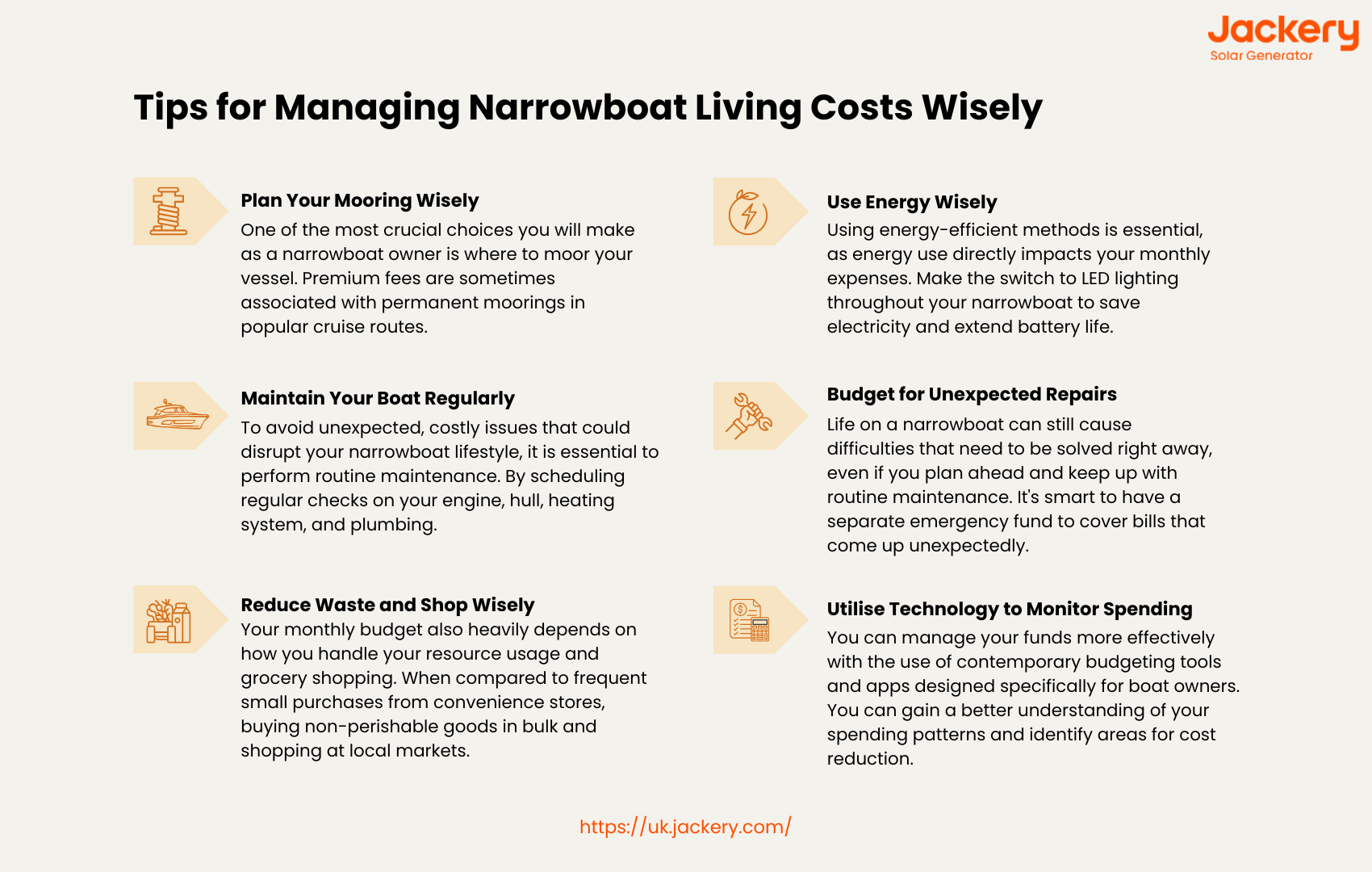
Tip 1: Plan Your Mooring Wisely
One of the most crucial choices you will make as a narrowboat owner is where to moor your vessel. Premium fees are sometimes associated with permanent moorings in popular cruise routes or in very desirable urban areas, which can dramatically raise your monthly expenses.
On the other hand, if you choose moorings in less busy or more rural areas, you can save a lot of money. Combining short-term moorings with cruise time can help you save money and give you more options. Conducting extensive research and possibly negotiating mooring fees could significantly impact your overall expenses.
Tip 2: Use Energy Wisely
Using energy-efficient methods is essential, as energy use directly impacts your monthly expenses. Make the switch to LED lighting throughout your narrowboat to save electricity and extend battery life, which can lessen the need for generator fuel or recharging.
Using portable power stations like the Jackery Explorer 2000 v2 and Jackery Explorer 1000 v2 or investing in renewable energy sources like solar panels can supply clean power and reduce dependency on expensive fuel. Additionally, you will eventually save money by being mindful of turning off unused equipment and effectively managing your electricity use.
Tip 3: Maintain Your Boat Regularly
To avoid unexpected, costly issues that could disrupt your narrowboat lifestyle, it is essential to perform routine maintenance. By scheduling regular checks on your engine, hull, heating system, and plumbing, you can detect tiny problems before they turn into bigger ones.
Additionally, regular maintenance ensures your boat remains safe and in good working condition, ultimately saving you money on costly emergency repairs. Sometimes, planning maintenance work for times when there are fewer people around or when business is slow can save you money on labour costs in the long run.
Tip 4: Budget for Unexpected Repairs
Life on a narrowboat can still cause difficulties that need to be solved right away, even if you plan ahead and keep up with routine maintenance. It's smart to have a separate emergency fund to cover bills that come up unexpectedly, such as engine difficulties, leaks, or electrical problems. With this extra money, you may pay for unforeseen bills without worrying about money and keep living the way you want to.
Tip 5: Reduce Waste and Shop Wisely
Your monthly budget also heavily depends on how you handle your resource usage and grocery shopping. When compared to frequent small purchases from convenience stores, buying non-perishable goods in bulk and shopping at local markets can often result in lower food prices. Planning meals and making good use of leftovers can help avoid food wastage and cut down on wasteful expenditure. In a similar vein, you can reduce your utility costs on the yacht by using energy-efficient cooking techniques and taking shorter showers to conserve fuel and water.
Tip 6: Utilise Technology to Monitor Spending
You can manage your funds more effectively with the use of contemporary budgeting tools and apps designed specifically for boat owners. You can better understand your spending patterns and spot areas for cost reduction by keeping a regular record of your earnings and outlays. Because some narrowboat expenses, like gasoline and maintenance, are unpredictable, having this level of financial awareness enables you to plan ahead and make wise decisions.
Jackery Portable Power Station for Narrowboat Living
Jackery Portable Power Stations can be a great addition to a narrowboat for several reasons, especially for those seeking more flexibility and supplemental power. Unlike a fixed onboard electrical system, a Jackery can be easily carried off the boat for use in other situations, like camping, picnics, or even for emergency power at home.
You can easily take the Jackery to a land-based power source (like a friend's house or a cafe) to recharge it, which can be useful if your boat's primary charging methods (engine, solar) are limited or not available.
It serves as an excellent backup for your primary boat batteries, ensuring you always have power for essential devices, even if your primary system encounters issues.
Jackery Explorer 1000 v2
The Jackery Explorer 1000 v2 is a compelling choice for narrowboat owners due to several key features that align well with the unique power demands and living style of a canal boat. The "v2" signifies an upgrade to a LiFePO4 (Lithium Iron Phosphate) battery. This is a significant advantage for narrowboat use.

LiFePO4 batteries are rated for thousands of charge cycles (the Jackery 1000 v2 boasts 4,000 cycles to 70%+ capacity), far exceeding those of traditional lithium-ion batteries. This means it will last a very long time, even with regular use, which is ideal for a long-term investment, such as a narrowboat power source.
LiFePO4 batteries are inherently more stable and less prone to thermal runaway (overheating leading to fire) than other lithium-ion chemistries. This is crucial in the confined space of a narrowboat where safety is paramount.
The 1500W continuous AC output is a substantial improvement over previous 1000W models. This allows you to run a broader range of appliances that might otherwise be too demanding for your boat's central inverter or require starting the engine.
Weighing approximately 23.8 lbs (10.8 kg) and featuring a compact design, the 1000 v2 is highly portable. This is excellent for a narrowboat, where space is at a premium, and you may want to relocate the power station around the boat or even take it ashore for charging or other purposes.
Jackery Explorer 2000 v2
The Jackery Explorer 2000 v2 is an excellent choice for a narrowboat, particularly if you have higher power demands or want to reduce reliance on your boat's engine or shore power. It takes all the benefits of the 1000 v2 and scales them up, making it suitable for a wider range of appliances and longer off-grid periods.

You can power more devices for longer or more power-hungry devices for a reasonable amount of time with a 2042Wh capacity. It's ideal for running essentials like a small refrigerator (for several hours, potentially days, depending on wattage and efficiency), a CPAP machine through the night, or even a small microwave for reheating meals (though only for short bursts).
The 2200W continuous AC output and 4400W surge are a significant jump, allowing you to comfortably run many household appliances that the 1000 v2 might struggle with. Just like the 1000 v2, the 2000 v2 utilises LiFePO4 batteries. This is paramount for narrowboat use.
Rated for 4000 charge cycles to 70%+ capacity, meaning it's designed to last for many years of regular use, even if you use it daily. This offers a significantly longer lifespan compared to older lithium-ion chemistries. LiFePO4 is inherently more stable and less prone to overheating or thermal runaway, which is a critical safety consideration in confined spaces, such as narrowboats.
Weighing around 38.6 lbs (17.5 kg), the 2000 v2 is remarkably light for its capacity. Jackery highlights its "Cell-to-Body" (CTB) technology, which makes it more compact and lighter than many other 2kWh LiFePO4 power stations.
FAQs
The following are frequently asked questions about preventing blisters while hiking.
1. Is living on a narrowboat cheaper than a house?
Because narrowboat living eliminates many typical housing costs, such as large rent or mortgage payments, it can be less expensive than buying or renting a home or flat, particularly in expensive places like London. Budgeting is crucial because expenses like fuel, insurance, maintenance, and mooring fees may mount up. Overall, narrowboat living is more affordable for many, especially when opting for rural moorings with lower rates. Location and individual lifestyle have a significant impact on this cost advantage.
2. Do you pay council tax if you live on a narrowboat?
Yes, if a narrowboat is anchored in one spot long enough to be regarded as a permanent dwelling, its occupants are usually required to pay council tax. Local authorities may have different regulations, but if your boat is your primary residence and you leave it moored for an extended period, council tax is applicable, just as it is for homes or apartments. Boats without a permanent mooring but with a valid boat licence may occasionally be exempt from council tax.
3. Can you live permanently on a canal boat?
It is feasible to live on a canal boat all the time, but you need to do a lot of planning to get the right mooring rights and legal permits. Many people opt for "continuous cruising," which involves relocating their boat on a regular basis to avoid paying permanent mooring costs and adhering to the rules. Some people obtain a residential mooring, which involves paying for a designated area and adhering to the regulations set by the local government. There are permanent liveaboard licenses available; however, they vary depending on your location and the canal authority.
4. Is it cold living on a canal boat?
The metal design of the boat, combined with its exposure to cold, damp air, may make a living on a canal boat rather cold, especially in the winter in the UK. However, many liveaboards can maintain comfortable temperatures in their homes all year round, thanks to double-glazed windows, efficient heating systems such as electric or diesel heaters, and sufficient insulation. Controlling moisture and condensation, which can make the inside feel cooler, also requires good ventilation.
Final Thoughts
Living on a narrowboat may be both cheap and profitable if you plan properly. By understanding all the various costs, such as mooring fees, upfront payments, power, and unexpected repairs, you can better plan your budget and avoid surprises. It is crucial to follow the rules, invest in energy-efficient solutions, and adhere to a budget.



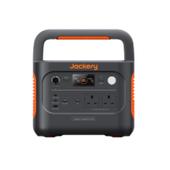

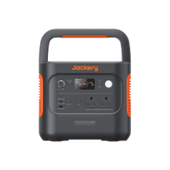

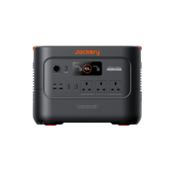
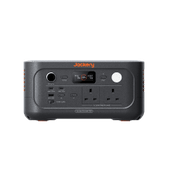
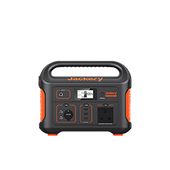
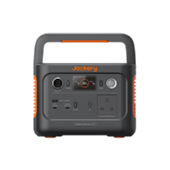
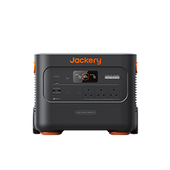
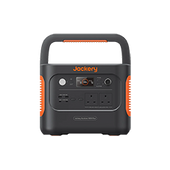

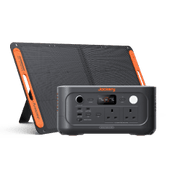
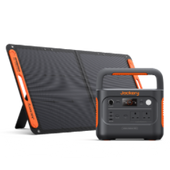
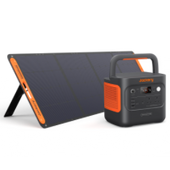
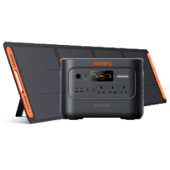
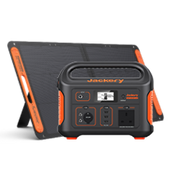
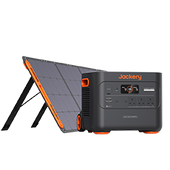
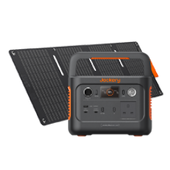
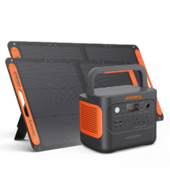

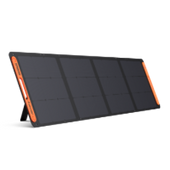
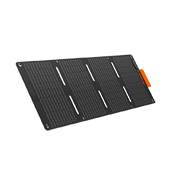
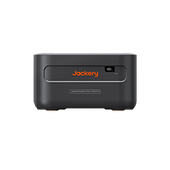
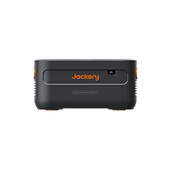
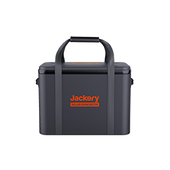
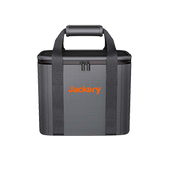
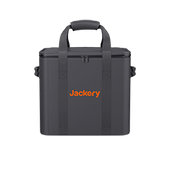
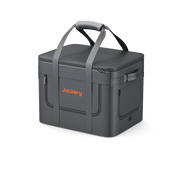
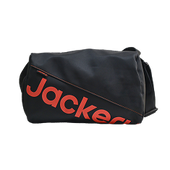

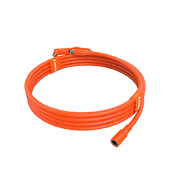
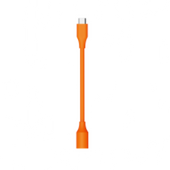
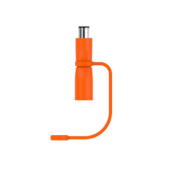
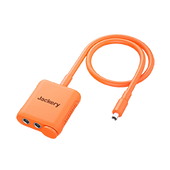

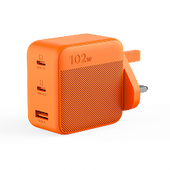
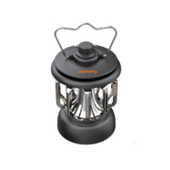
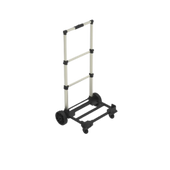


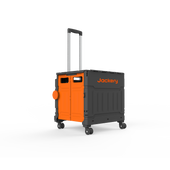









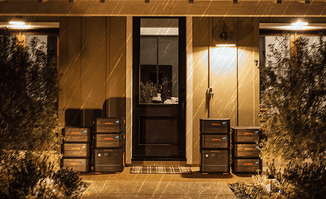
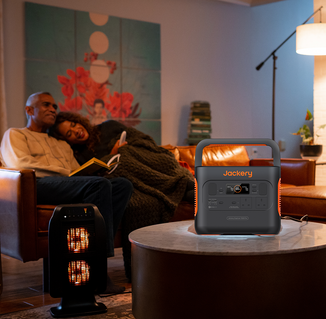







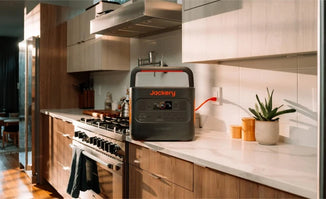
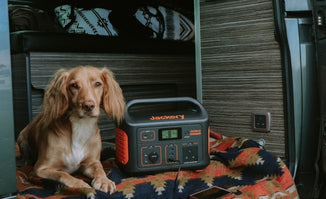
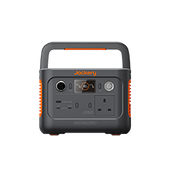
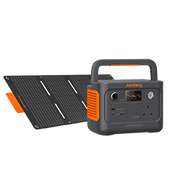


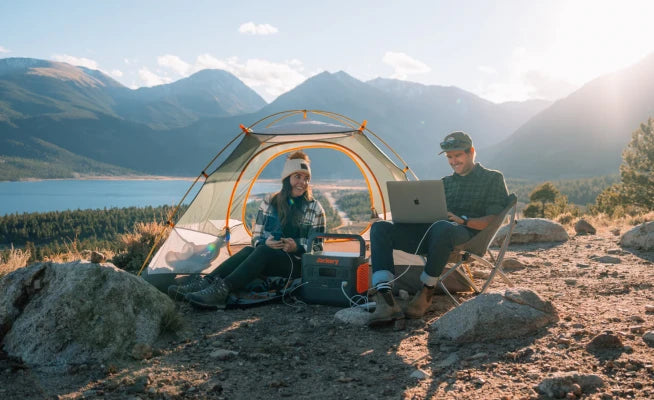





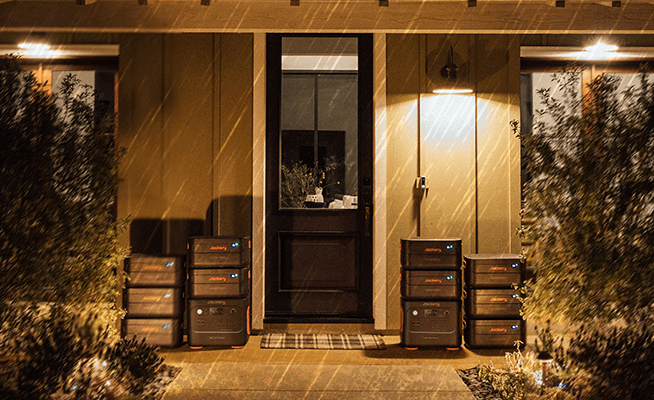
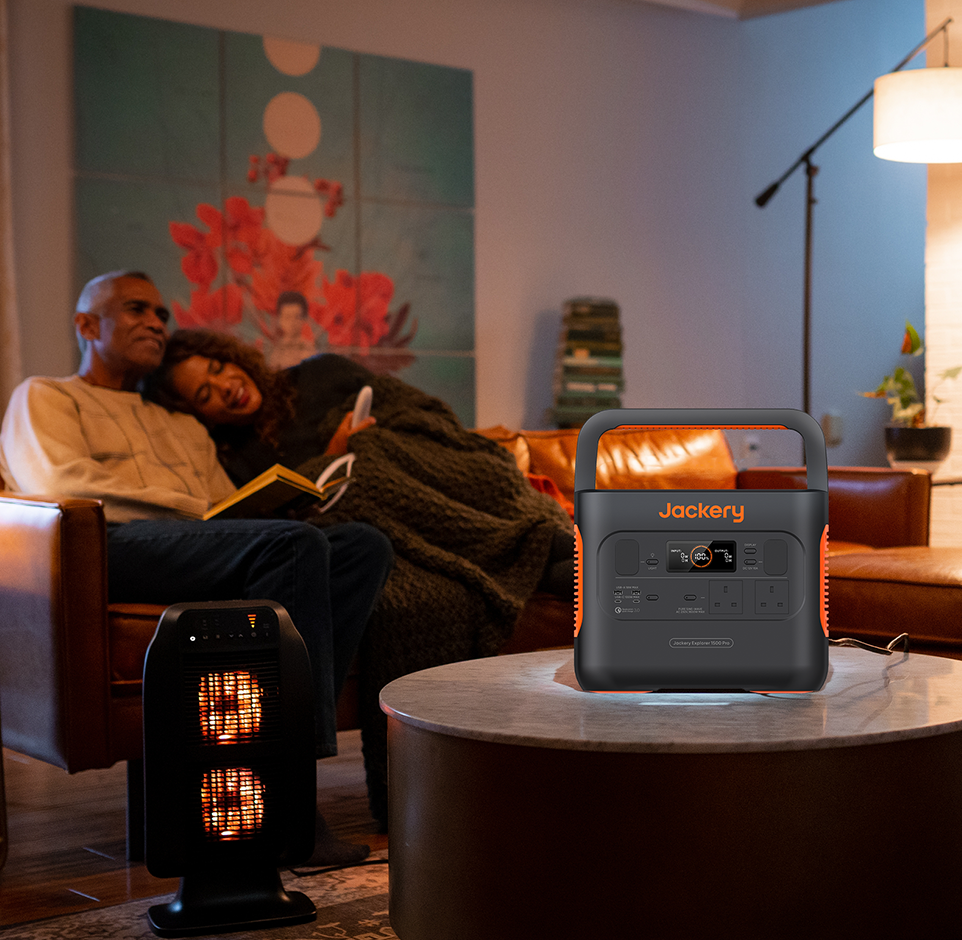







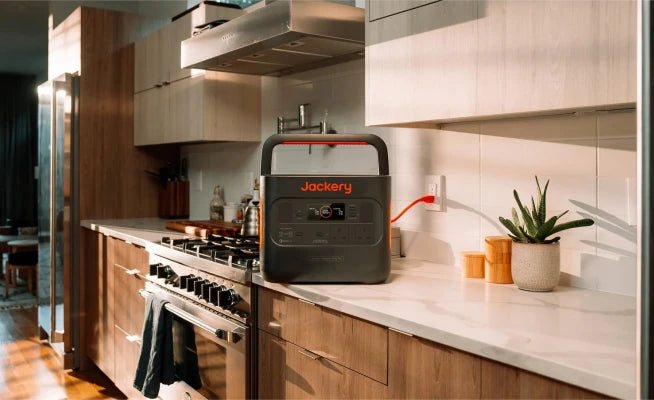
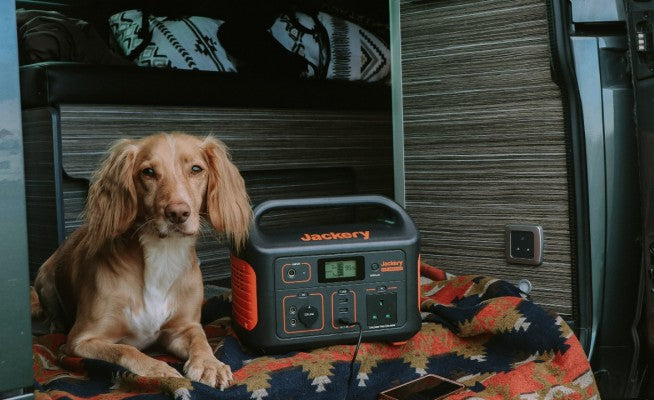






![Cost of Living on a Narrowboat [Living Cost Guide]](http://uk.jackery.com/cdn/shop/articles/costs_of_living_in_a_narrowboat_guide_36f57be3-1301-4c6f-973a-34546f97e026.png?v=1750241615)




